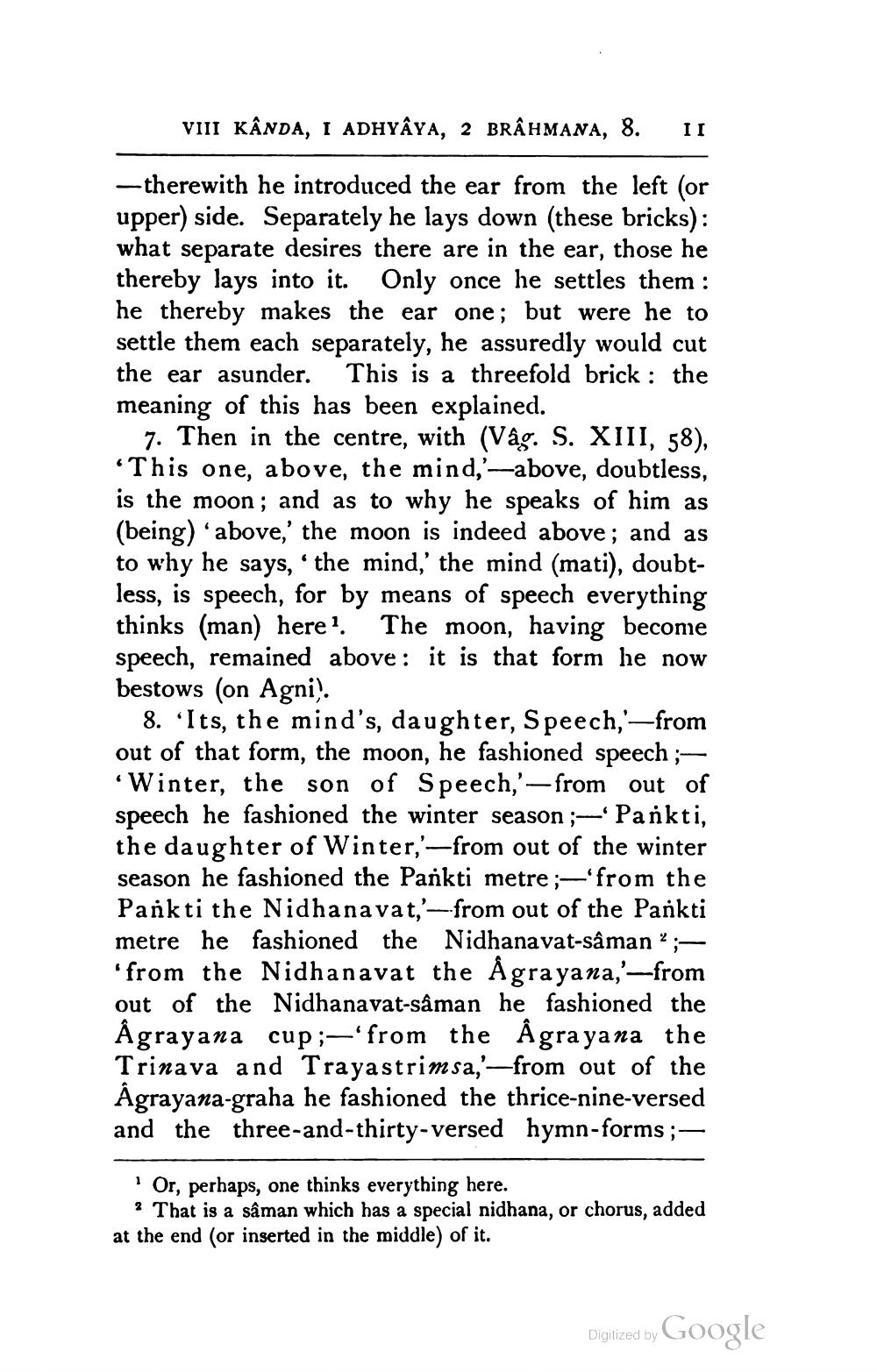________________
VIII KÂNDA, I ADHYAYA, 2 BRÂHMANA, 8.
II
-- therewith he introduced the ear from the left (or upper) side. Separately he lays down (these bricks): what separate desires there are in the ear, those he thereby lays into it. Only once he settles them : he thereby makes the ear one; but were he to settle them each separately, he assuredly would cut the ear asunder. This is a threefold brick: the meaning of this has been explained.
7. Then in the centre, with (Vâg. S. XIII, 58), "This one, above, the mind,'-above, doubtless, is the moon; and as to why he speaks of him as (being) above,' the moon is indeed above; and as to why he says, the mind,' the mind (mati), doubtless, is speech, for by means of speech everything thinks (man) here. The moon, having become speech, remained above: it is that form he now bestows (on Agni).
8. 'Its, the mind's, daughter, Speech,'—from out of that form, the moon, he fashioned speech ;Winter, the son of Speech,'— from out of speech he fashioned the winter season ;-Pankti, the daughter of Winter,'—from out of the winter season he fashioned the Pankti metre ;-'from the Pankti the Nidhanavat,'- from out of the Parkti metre he fashioned the Nidhanavat-sâman ? ;'from the Nidhanavat the Ågrayana,'-from out of the Nidhanavat-sâman he fashioned the Ågrayana cup;—'from the Âgra yana the Trinava and Trayastrimsa,'—from out of the Agrayana-graha he fashioned the thrice-nine-versed and the three-and-thirty-versed hymn-forms ;
Or, perhaps, one thinks everything here. ? That is a sâman which has a special nidhana, or chorus, added at the end (or inserted in the middle) of it.
Digitized by Google




